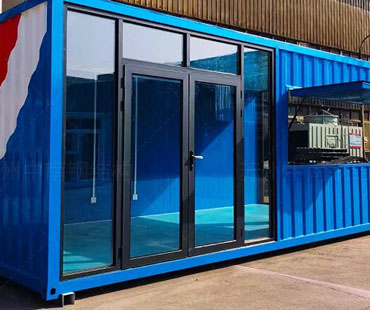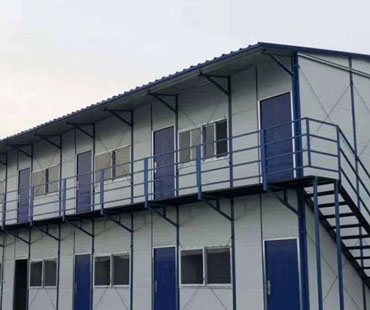In an increasingly interconnected world, the global supply chain plays a crucial role in the movement of goods across borders. Shipping containers are the backbone of this supply chain, transporting nearly 90% of the world's cargo. However, the security of these containers has become a pressing concern due to the potential risks posed by theft, smuggling, and terrorism. To ensure the safety of cargo transportation, a comprehensive approach to container security is essential.
1.The Threat Landscape in Container Shipping
The container shipping industry faces a variety of security threats, including:
-Theft and Cargo Loss: Containers are often targeted for theft due to their high value and the ease with which they can be accessed at ports and terminals. Cargo theft can lead to significant financial losses and disrupt supply chains.
-Terrorism and Smuggling: Containers can be exploited for smuggling illegal goods, weapons, or even individuals. The potential for terrorist activities using containers poses a significant risk to global security.
-Cybersecurity Threats: With the increasing reliance on digital technologies, cybersecurity threats have emerged as a critical concern. Cyberattacks can compromise operational systems, leading to disruptions and potential security breaches.
2.Physical Security Measures
Implementing robust physical security measures is essential for safeguarding containers throughout their journey:
-Seals and Locks: High-security seals and locks are fundamental for preventing unauthorized access to containers. These seals are designed to be tamper-evident, providing visual indicators of potential breaches.
-CCTV Surveillance: Installing surveillance cameras at ports, terminals, and warehouses enhances security by providing real-time monitoring of container movements. CCTV footage can be invaluable for investigating incidents and deterring criminal activity.
-Access Control Systems: Restricting access to sensitive areas within ports and terminals through biometric systems and ID checks ensures that only authorized personnel can handle containers. This reduces the risk of insider threats and unauthorized access.
3.Technological Innovations in Container Security
Advancements in technology are transforming container security, making it more efficient and effective:
-GPS Tracking and Monitoring: Real-time GPS tracking devices are increasingly being integrated into containers, allowing for continuous monitoring of their location. This technology helps in quickly identifying deviations from planned routes, which may indicate theft or tampering.
-IoT Sensors: Internet of Things (IoT) sensors can monitor various parameters, such as temperature, humidity, and even shock or vibration. These sensors provide valuable data, ensuring that cargo remains safe and undamaged during transit and alerting stakeholders to any anomalies.
-Smart Containers: The development of smart containers that integrate multiple technologies, such as GPS, RFID, and sensors, enables comprehensive monitoring of cargo conditions and security. These containers can communicate with logistics systems to provide real-time updates.

4.Data Security and Cyber Protection
As the logistics industry becomes more digitized, protecting data and systems against cyber threats is paramount:
-Cybersecurity Protocols: Implementing strong cybersecurity measures, such as firewalls, encryption, and regular software updates, helps protect operational systems from cyberattacks. Training employees on cybersecurity best practices is also crucial to mitigate human error.
-Blockchain Technology: The use of blockchain in logistics provides a secure and transparent way to track the movement of containers and cargo. By creating an immutable ledger of transactions, blockchain enhances accountability and reduces the risk of fraud.
5.Collaboration and Information Sharing
Effective container security requires collaboration among various stakeholders in the supply chain:
-Public-Private Partnerships: Governments and private sector entities must work together to develop and implement security standards and protocols. Sharing intelligence about potential threats and vulnerabilities is essential for proactive risk management.
-Industry Standards and Certifications: Adopting industry standards, such as those established by the International Maritime Organization (IMO) and the World Customs Organization (WCO), helps ensure that security measures are consistent and effective across different regions and companies.
6.Training and Awareness Programs
A well-informed workforce is crucial for maintaining container security:
-Employee Training: Regular training programs for employees on security protocols, threat recognition, and response procedures enhance overall security awareness. Employees should be encouraged to report suspicious activities and understand the importance of their roles in maintaining security.
-Public Awareness Campaigns: Engaging the public and raising awareness about the significance of container security can foster a culture of vigilance, encouraging individuals to report any suspicious behavior related to cargo transport.
Container security is a multifaceted challenge that requires a comprehensive approach involving physical measures, technological innovations, and collaboration among stakeholders. As threats to cargo transportation evolve, so too must the strategies employed to mitigate these risks. By investing in advanced security technologies, enhancing physical measures, and fostering a culture of awareness, the shipping industry can significantly improve the safety of container transport. In doing so, it not only protects valuable cargo but also ensures the integrity and efficiency of the globalsupply chain. The ongoing commitment to enhancing container security will ultimately contribute to the overall resilience of the logistics industry, safeguarding against threats that could disrupt not only businesses but also economies and communities worldwide.


